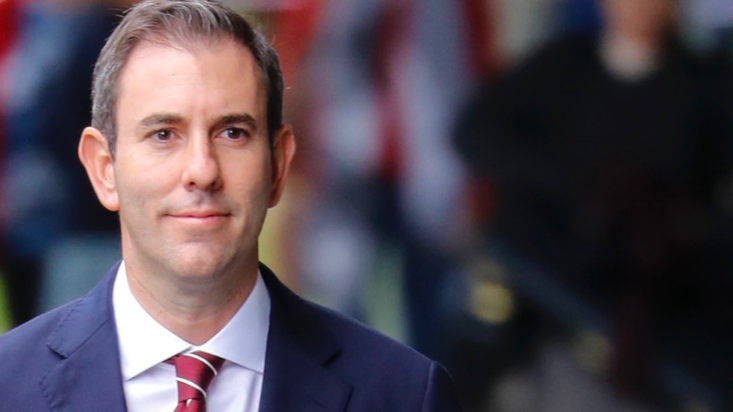Economic growth to slow, real wages to fall as budget blows out
The Albanese government has unveiled its first federal budget, with a focus on what it calls ‘spending restraint’ and alleviating cost-of-living pressures as economic growth slows in response to higher interest rates.
The government announced a budget deficit of $36.9 billion, widening to $44 billion in 2023-24, $51 billion in 2024-25 and $50 billion in 2025-26. While the 2022-23 deficit is less than half the $78 billion forecast in the May budget, deficits are still forecast to spiral over the next three years as interest rates rise and economic growth slows.
Shane Oliver, chief economist at AMP Australia, says forecast deficits in years to come are a big problem.
“The budget presents a significant long-term challenge with yet another ramp-up in structural spending reflecting increasing demands on the public sector, with a little in the way of major spending offsets and a continuing reliance on rising revenue to at least stop the situation worsening,” Oliver says. “As such, it still leaves significant deficits in place for the next decade at least.”
Slowing economic growth is expected to push the unemployment rate up. The budget papers forecast economic growth plunging to just 1.5 per cent in 2023-24, down from 3.25 per cent in 2022-23. The unemployment rate is estimated to rise to 4.5 per cent by June 2024 from its current level of 3.5 per cent, a 50-year low. Inflation is forecast to average 5.75 per cent in 2022-23, peaking at 7.75 per cent in the December quarter this year, as higher grocery and petrol prices push up the cost of living.
Tax cuts intact, but real wages to fall
Federal Treasurer Jim Chalmers has stuck to stage-three tax cuts for higher income earners. The cuts, which will take effect in July 2024, create a flat tax rate of 30 cents on the dollar for anyone earning between $40,000 and $200,000 a year.
Yet real wages are expected to start growing again only in 2024, after inflation moderates. By then, wages are forecast to grow 3.75 per cent compared with the consumer price index of 3.5 per cent.
“The good news is that the budget, with its lower deficits this year and next, won’t add to inflationary pressure in the near term and so won’t add to Reserve Bank of Australia rate hikes,” Oliver says. “We expect another 25 basis point rate hike next week and the cash rate to peak at 2.85 per cent with a risk case of 3.1 per cent.”
Impact on listed companies
According to CommSec senior economist Ryan Felsman, data since 2000 shows that the S&P/ASX200 index gains on average just 0.2 per cent the day after the federal budget is released. However, moving forward, some sectors could benefit from increased government spending, including the housing, infrastructure, consumer and childcare-related sectors.
Tax cuts and policies aimed at increasing consumer spending could favour consumer discretionary and consumer staples stocks, Felsman says, which include supermarkets and electronics retailers such as JB Hi-Fi, Harvey Norman, Premier Investments, Metcash, Coles, Wesfarmers and Woolworths.
The government has also announced plans to build one million new homes and boost investment in affordable housing. “Building materials, residential and commercial property developers could benefit along with property-listing firms REA Group and Domain,” Felsman says.
“Housing policies should see a continued investor focus on the ‘big four’ banks – ANZ Bank, Commonwealth Bank, National Australia Bank and Westpac Bank – alongside Macquarie Group and regional banks such as Bendigo & Adelaide Bank and the Bank of Queensland,” he adds.
Childcare services providers such as G8 Education and educational services firm 3P Learning could be beneficiaries of increased childcare subsidies and education spending. The government announced 480,000 fee-free TAFE and community-based vocational education places. ASX-listed IDP Education could also benefit as it provides student placement services to enrol in universities, schools and colleges, according to Felsman.
The Albanese government has also announced $8.1 billion in planned infrastructure spending, including the Suburban Rail Loop East in Melbourne, the Bruce Highway and other important freight highways such as the Tanami Road and Dukes Highway.
“Building materials companies and residential and commercial property developers, such as Transurban, Adbri, Bluescope Steel, Boral, Brickworks, Cimic, James Hardie, Mirvac and Stockland, could be in focus for investors,” Felsman says.
Labour supply still a problem
Analysts at UBS are not so upbeat about the budget’s impact on the share market. While it narrows the deficit, they note, the budget does not address labour market shortages – one of the main challenges facing companies.
“Despite this budget making some incremental positive adjustments on labour supply, in the near-term labour shortages still threaten companies’ ability to deliver on their customers’ demand,” UBS states. It notes that labour shortages were the new challenge companies most frequently cited in the recently completed August reporting season. With a gloomy global economy and continued challenges from supply constraints, UBS has forecast a year-end target of 7,000 for the S&P/ASX200.











